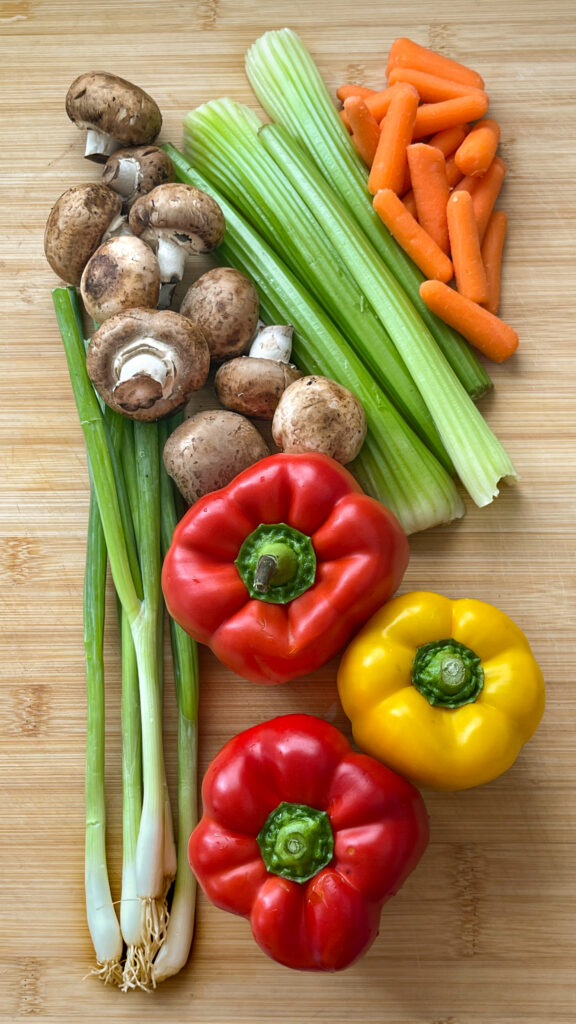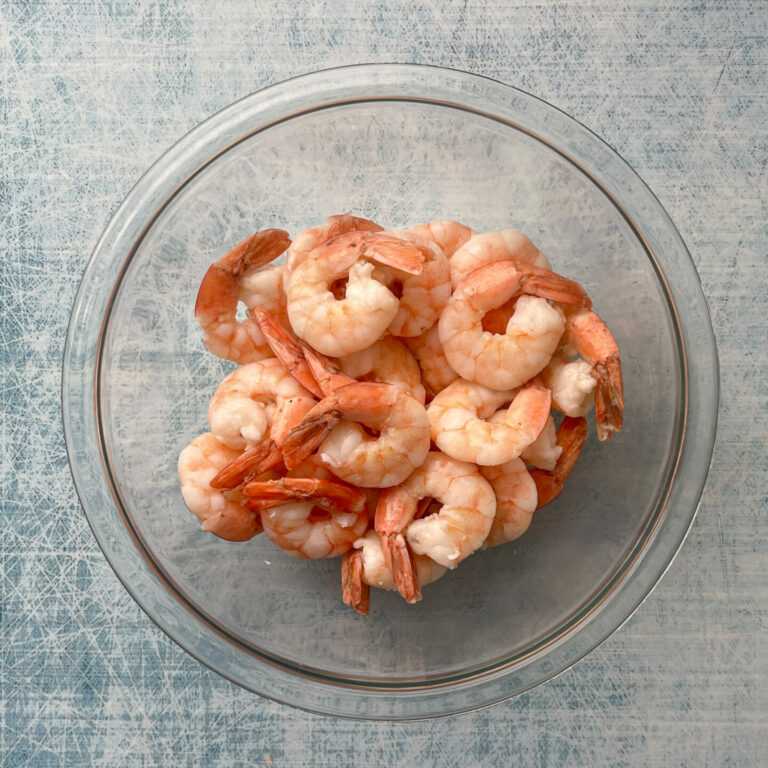
Hey There Stir-Fry Lovers! Creating a delicious stir-fry isn’t just about the sauce you use or the quality of your protein. One of the often overlooked yet super crucial elements is how you cut the vegetables for a great stir-fry. Today, I’m revealing some handy techniques that will take your stir-fry to the next level.
By cutting your vegetables correctly, you can enhance their flavor, ensure they cook evenly, and make your stir-fry visually appealing.
Related Recipes
Very soon, after learning the techniques on this blog post, you’ll be the chopped champion! Looking for some exciting ways to use your well-prepared veggies for stir-fry or in other Chinese dishes? Check out these delectable recipes:
WATCH How To Cut Vegetables for Stir-Fry
To catch all the tips in action, check out my detailed video tutorial here. This first video shows how to cut all of the vegetables for stir-fry. It includes some more general information. I even include a funny story recalling my childhood memories.
Then, in each section below, I include additional videos. Each go into more depth for each vegetable separately. You’ll find the clips slowed down with step-by-step instructions for each veggie.
Why are vegetables cut diagonally for stir-fry?
Firstly, let’s talk about the importance of the diagonal cut. When you cut your vegetables diagonally, it increases the surface area exposed to the heat, allowing your vegetables to cook faster and absorb more of the delicious sauce. Plus, diagonally cut veggies add a beautiful visual element to your dish.
Use everyday veggies that you have in your fridge!
You really don’t have to run to the grocery store to buy special vegetables for stir-fry. Just use what you have. In this article, I show you how to cut baby carrots, celery, bell peppers and mushrooms. Next up are the aromatics that are used in almost every Chinese stir-fry. We’ve got green onions, onions, ginger, and garlic. OK, let’s dive into the details!
All the Vegetables that You want to Cut!
Carving Baby Carrots 🥕
Let’s start with baby carrots, adding a pop of color and a delightful crunch to our stir-fry.
You might ask why baby carrots? Well, they are the perfect size and already peeled, so you don’t have to! And, I always have them in my refrigerator for my salad loving husband, Scott.
Remember to curl your fingers under for protection while you prep your veggies for stir-fry. Slice your carrots diagonally to maximize surface area for all that lovely heat to work its magic. Remember, not too thin, not too thick, just perfect.
If you want to use large carrots, peel them with a vegetable peeler first. Depending on the size of the carrot, you may want to leave it whole, or cut it in half. You get to decide what shape you want the carrots to be. Do you want diagonal “coins,” or would you prefer semi-circles? Try to slice the carrots uniformly so they cook evenly.
Slicing Celery
Celery’s next in line, adding another layer of crunch. Celery can tend to be stringy, and I always peel the stalks for stir-fry. But, you don’t have to! You can use a knife or vegetable peeler if you want. But for me and expediency, I just tear them off by hand. Just grab an end of the stalk, and crack it back, and peel. Repeat with the other end of the stalk. Then, you’ll have more tender celery pieces..
After disposing the strings, put the celery flat on the rib side, not the rounded side. Repeat the same diagonal cuts as the carrots to keep a uniform size.
Prepping Peppers 🫑🌶️
Now it’s time for some color. With our yellow and red peppers, first, quarter and then cut out the white ribs inside. Pepper seeds are slightly bitter. So, I recommend that you deseed them.
Once the peppers have been quartered and the seeds thrown away, now the cutting can start. Take a quarter and place it face down, and cut diagonally across the piece into strips, as in the video. Once again, make sure the pieces are even for cooking.
Slicing Mushrooms 🍄
It’s time to tackle the mushrooms. I love the umami taste of fungi: earthy and hearty! After detaching the foot, cut them into slices – they will shrink when cooked. However, I love that mushrooms hold their shape, and literally stay together no matter how long you stir-fry them.
Cut the foot off first and discard. (or use them to make an umami flavored veggie broth.) Then, with the mushrooms flat on the board, slice them to a thickness mimicking those of the bell peppers and other vegetables. Remember, we want an even ness to the thicknesses and size of the veggies so that they will be finished in the stir-fry at the same time.
Chopping Green Onions
Let’s turn our attention to green onions. For some reason, I get a real thrill out of cutting these. I guess it’s because they are a small beautiful elegant shape after being cut diagonally for stir-fry, or as a garnish for any dish.
In the video below you’ll see that I first cut the white root end off at an angle and discard. Then, use the knife to carve them into long, slender slivers, perfect for stir-fry.
Notice I cut one green onion and give you the option to also cut three at a time. With the one stalk, I have the knife at a smaller angle from the left, so the slivers are thinner, and longer. These are great as garnish.
When I cut the three stalks together, it makes it a little harder to cut long slivers as the stalks can roll a little. So, I put the knife at a larger angle, so the slivers are shorter and a little chunkier. However, they still maintain the diagonal cut. These are better for being stirred into whatever dish you’re making. You’ll have a better mouth feel due to the size.
Somehow, for me, green onions have more of an art feel to cutting. You can easily create something elegant, thin, and long. Or you can choose to angle your knife to make the green onions whatever chunkiness you desire. There you go, you’re creating in the kitchen!
Slicing Onion 🧅
Switching gears to the aromatics that you’ll find in almost every Chinese dish! Onions, Garlic and Ginger are what make walking into a Chinese restaurant so pungent!
The onion follows. Cut it in half with the skins on. You’ll then be able to peel off the skins and throw them away, or throw them into the pot with the mushroom feet to make the veggie broth! Put half of the onion flat side down, and then slice it lengthwise, and not into semicircle pieces. This will give you more elegant pieces instead of ones that will curl, unless that’s what you want.
Crushing Garlic 🧄
Let’s focus on the ultimate flavor booster, Garlic!
As I mentioned in the first video, my mom used to make a lot of smashing noises when it was 5pm. She would smash the garlic with the side of her Chinese cleaver. Bang, Bang, Bang! But, what an EASY way to peel the cloves and release the aroma! So, cut the root end off the clove, and then smash it with a cleaver, or push your chef knife down on top of the clove. Throw out the peel, and then either use the smashed clove, or mince the garlic for your stir-fry. I often will use a whole or slightly smashed clove when the veggies are stir-frying. Once the dish is ready to be served, I’ll take the garlic out so no one has a spicy surprise bite!
Cutting Ginger
Last but not least, ginger. This zesty root should be sliced approximately 1/8″ thick, adding a kick to your stir-fry.
Find a knob that is an appropriate size, so that when you cut the pieces they will be around the size of a quarter. Or if you have a smaller piece of ginger, you can just add more slices into your dish. I’ll typically use two or three larger quarter size slices. OR three or four slices if they are smaller than quarter sized.
Now that your vegetables are ready, let’s get cooking!
Notes:
- A sharp knife will help you make clean, precise cuts.
- Uniformly sized pieces ensure even cooking.
- The beauty of a stir-fry lies in its versatility, feel free to add or substitute your favorite veggies.
FAQs:
Q: Why should I cut vegetables diagonally for stir-fry?
A: Diagonal cuts expose more surface area, helping the veggies cook quickly and absorb more flavor.
Q: Can I add other vegetables to my stir-fry?
A: Absolutely! The more, the merrier. Just remember to adjust cooking times accordingly.
Q: How do I keep my veggies vibrant in the stir-fry?
A: Quick, high-heat cooking helps maintain the color and texture of your veggies.
Q: How do I stop crying while cutting onions?
A: Try chilling the onion before cutting or cut it under running water to minimize the tear-inducing compounds.
And there you have it – a complete guide on how to cut vegetables for stir-fry. Get chopping, have fun, and soon you’ll be a stir-fry pro! Let’s wok and roll!








This Post Has 4 Comments
Thank you for all the tips and suggestions, I had no idea why the vegetables were always cut on a diagonal. Thank you for explaining that, it makes sense.
HI Giangi, I really appreciate you stopping by the website. For me, I just love the diagonal cuts, because it makes the dishes look more elegant, along with what I mentioned about making things consistent, allowing more surface area for cooking faster, and absorbing sauces. Please let me know what else you’re interested in! Do you do a lot of Asian cooking? I’d love to know what I can help with, I’m always here!!
Carole
This so helpful! I especially appreciate the videos — they’re super clear and easy to follow.
Hi Diane,
I’m really glad you like the videos. It seems that the simpler and more straightforward the explanations, and videos, the more people like them. So, I really appreciate the feedback. Let me know if you use these cutting techniques in any of my other recipes. For example, the fried rice http://www.thisisyu.com/2021/09/23/better-than-takeout-easy-fried-rice/ is a yummy option, and gives you the opportunity to cup the ham into dice. You can also use any of the vegetables that you learned to cut in this tutorial and add them to the fried rice. I really use whatever I have in my fridge! Thanks again!
Carole